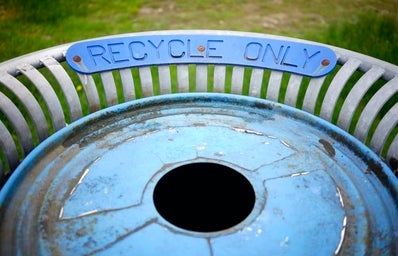As the sales of Stanley Tumblers rise nationwide, the term “overconsumption” has started popping up all over social media, but what is overconsumption? Overconsumption is widely defined as when a consumer is unwilling to reuse their own items in favor of purchasing more, typically unnecessary items. In simpler terms, it’s basically an addiction to shopping or spending money. Lots of people like to joke that they have a “shopping addiction,” but it’s important to know the difference between buying a new cute top every now and then and buying eight reusable water bottles.
That’s the main issue with the Stanley Cup frenzy right now. Reusable water bottles were created as a convenient alternative to multiple single-use plastic bottles a day. While being a great environmentally friendly option, the reusable water bottle can be stylish, travel-friendly, and inexpensive, making it the better choice in many areas — this will result in more use, as many people will not opt to change their lifestyles or purchases simply to do what’s best for our climate. As reusable water bottles became more integrated into everyday life, companies began marketing their products in a way that would allow them to get the biggest profit possible. In 2019 and 2020, Hydro Flasks were booming because they were primarily advertised to teenage girls. The water bottles were a little pricey compared to its competitors, trendy, and aesthetically pleasing, which all appeal to the crowd that wants to fit in while still feeling exclusive and cool.
Beginning in 2022 and 2023, Stanley Tumblers began to take over social media. While the Hydro Flask was a basic water bottle that came in many different sizes with different lids, the Stanley stood out because of its design, which allowed for it to hold 40 oz of water and yet still able to fit in a car cup-holder, which many other brands, including Hydro Flask, could not. Another defining feature of the Stanley is the straw. It doesn’t have a lid that gets screwed on and off, it doesn’t have a cap that needs to be popped on and off, and it doesn’t have a spout that needs to be lifted up and down. Arguably, certain features of the cup would be its downfall, like the straw lid that easily leaks and causes spills, or the lead sealant inside the cup that, when damaged, can lead to lead consumption in the drinker, or one of the components of the lid that, if not properly taken off and cleaned, can cause a mold build up scarily close to where someone would put their lips on the cup to drink. So why are these cups selling out everywhere? Why are people racing to the aisles of Targets when the cups are restocked?
The main reason these cups blew up the market is circular. Simply, It blew up because it blew up. Influencers on apps like TikTok and Instagram began promoting them or simply using them in their videos, and before long, people were fighting for the cups. This isn’t inherently a problem. I am a huge advocate for reusable water bottles, and I bought mine at the height of its trendiness. I have a Hydro Flask I bought during freshman year of high school with a dent in it from when I dropped it on the concrete during swim practice, and another one from when it fell out of my golf cart while going full speed on the course. The problem starts when people, especially influencers, show off owning several different reusable water bottles in different colors. Apparently, one color isn’t enough, and now you need a different bottle for every mood and every day of the week. When consumers decide to buy four reusable water bottles, it begins to defeat the purpose of reusable water bottles.
Single-use plastic water bottles sold in bulk in grocery stores take up to 450 years to fully decompose. While they decompose, they release microplastics into our environment, slowly contaminating our food and water. Recently, scientists have discovered microplastics in our bloodstreams. Because this is so new, the health impacts are still unknown, but it’s safe to assume it can’t be good. While reusable bottles are a huge leap in the right direction, buying multiple can shorten that huge leap to a short jump. As of right now, Stanley Tumblers are still made from almost entirely virgin stainless steel, which can release toxic fumes while being mined. They state on their website that by 2025, they’re hoping to have half of their cups made from recycled steel, but who knows if the cups will still be this popular by then. Right now, people are buying them like candy, just assuming that as long as they’re not plastic, it’s fine. The problem is — some parts of the Stanley are plastic. Most of the lids on the most popular versions of the cup are made out of plastic. The straws are also made of silicone, which is non-recyclable at most facilities and is made using components of petroleum. While having small parts of a cup made out of plastic is still a major upgrade from entirely plastic bottles, when hundreds of thousands of consumers are buying multiple reusable water bottles, the plastic and silicone add up quickly. Last year, the Stanley company generated $750 million in revenue, which is almost double what they made in 2022 (which was over double what they made in 2021). This means the company has to start manufacturing about twice as many cups as they already were, which translates to mining more steel, producing more silicone, and using more plastic.
This is also just Stanleys. Most people already had reusable water bottles before the Stanley Tumbler became popular, so those materials are going to waste, too. And, of course, recycling an old reusable water bottle is amazing, but the manufacturing of the product has already happened, meaning the resources have already had a negative impact on the environment. The sad truth is many people don’t make the effort to recycle, especially things other than paper and cardboard, because they don’t know which items are and aren’t recyclable. Realistically, most reusable water bottles end up thrown in the trash or stored in the back of a kitchen drawer and forgotten about when someone has moved on to the next one.
I have no problem with the Stanley company, and this piece is not meant to criticize or drag them or their buyers down. It is simply meant to bring awareness to the huge problem that seems to be all over social media right now. People are so focused on doing what’s “cool” and “trendy” that we’ve forgotten that reusable water bottles are largely meant to be an alternative to environmentally unfriendly plastic bottles. This trend of buying things we don’t need applies to way more than just water bottles. Social media tends to promote feeding into the current trends that rarely last longer than a year. This makes women, especially young girls, feel the need to buy a new style of jeans twice a year, or new skincare products, or new makeup, or a new bag, or new workout sets, or basically anything you could ever think of. If you’re on social media, I’m sure you know: anything a person owns can be made “aesthetic,” and therefore, you should replace all of your belongings until they look a certain way. And by the time you finish doing that, we’ve moved on to a new style.
What can we do to get out of this toxic (and expensive) mindset? My best advice is to track how long trends last until you recognize that you’re ultimately wasting your money buying things just because they’re currently “in.” Stop looking to influencers or content creators to tell you what to buy and plan out what you need and what you want to spend your money on. Ask yourself why you need or want something, what you need or want it for, and how long you’d find it useful. Basically, are you getting your money’s worth? Consider spending less of your day on social media to get away from the constant promotions and advertisements. I promise you, your Owala, Hydro Flask, or random water bottle you got from second-grade soccer camp are all just as useful, and based on how quickly social media trends come and go, there’s a solid chance that your bottle will get its 15 minutes of fame sooner or later.


